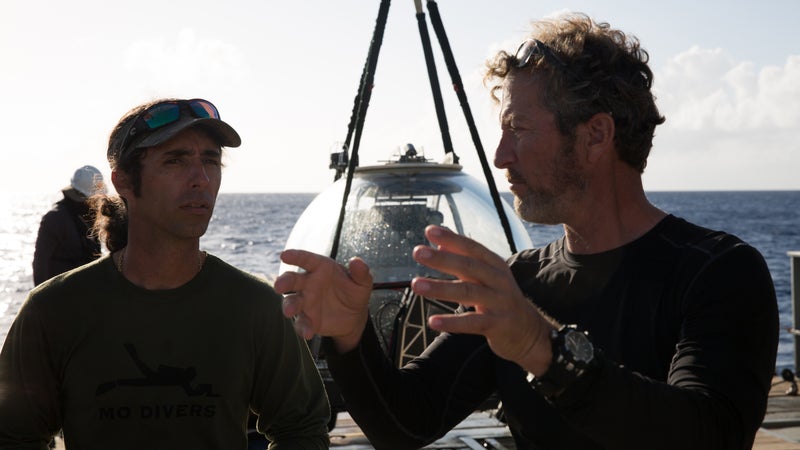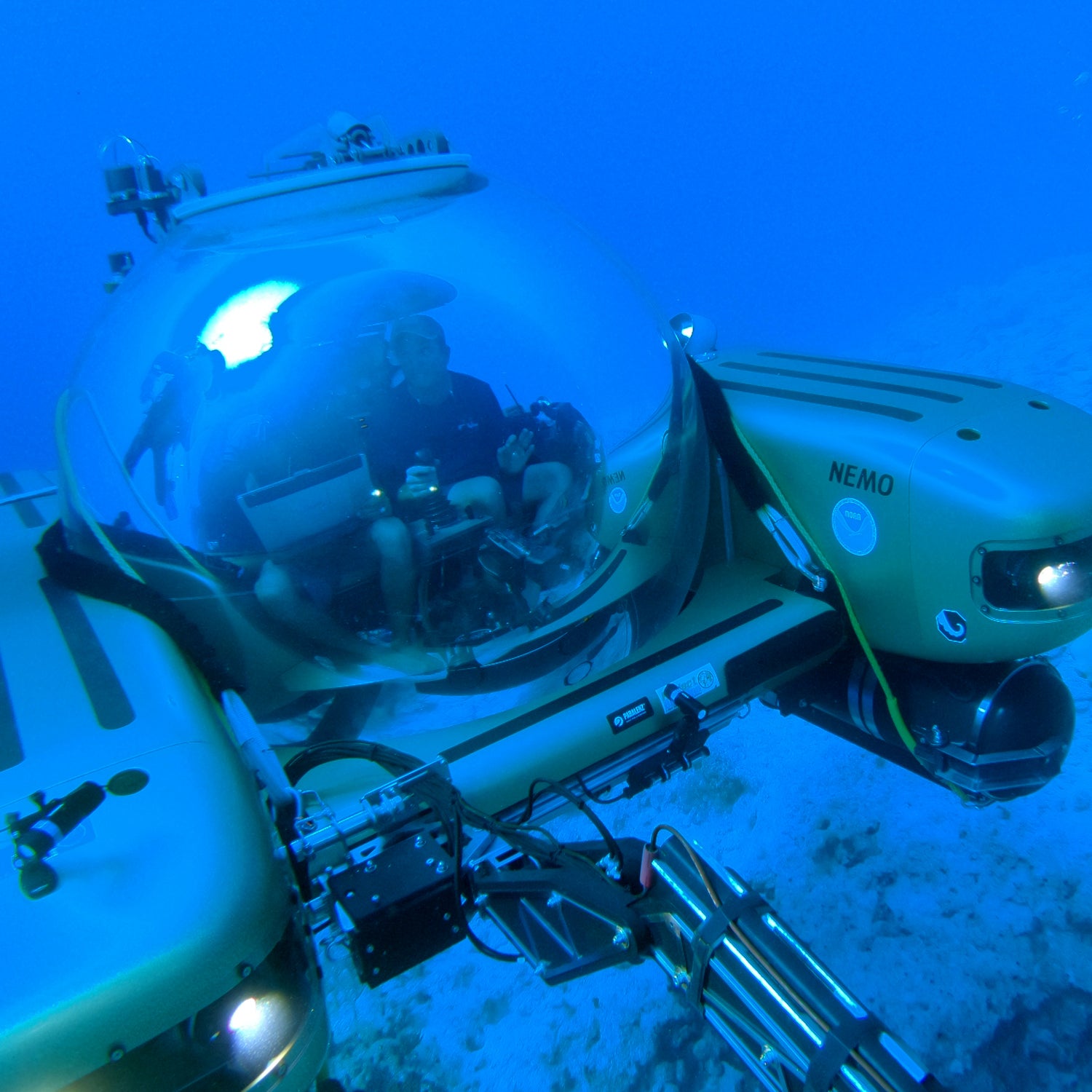Pop culture depictions of treasure hunters tend to fall into two categories: the ruthlessly swashbuckling Jack Sparrows hell-bent on making their fortunes, and the Indiana Jones types who piously battle to ensure all artifacts are protected in museums.
The reality, of course, is that most modern-day treasure hunters fall somewhere in between. Take Darrell Miklos, whose Discovery Channel reality show, , debuts its second season on June 22.
The series’ bizarrely fantastical premise alone is reason enough to tune in. Miklos is the son of controversial treasure hunter Roger Miklos, a retired Reno police officer who has purportedly made and lost millions and has been implicated in at least one bribery scandal in an attempt to secure dive permits. None of that stopped the younger Miklos from entering his father’s profession. Cooper’s Treasure raises the stakes by following Darrell Miklos as he sets out to find sunken ships first mapped by Project Mercury astronaut Gordon “Gordo” Cooper while in space in the 1960s.
The producers depict Cooper’s missions using both archival footage and dramatic recreations of the Air Force colonel, in full spacesuit and strapped into an orbiting space capsule, snapping photos of the Caribbean using his own vintage 35-millimeter camera, as if this is the most perfectly natural thing for a NASA astronaut to do. Cooper took more than 100 photos of the area after noticing dark patches that he thought were shipwrecks. Once he returned to earth, Cooper tried to find the sunken ships—which are mostly Spanish and dating back to the 16th century—but he was limited by the technology of his generation. Late in life, Cooper befriended the younger Miklos and became a father figure to the diver. On the eve of his death, in 2004, Cooper bequeathed to Miklos his extensive maps, photographs, and notes on both the sunken ships and the billions of dollars’ worth of artifacts they may contain.
Treasure hunting has existed for centuries, but rapid advances in technology have made the stakes higher than ever before. Today, speculators like Miklos equip themselves with everything from sophisticated magnetometers to underwater lasers and night-vision goggles. They’re finding vessels that would have been impossible to locate just a decade ago—and not everybody is pleased when the ships are found. Last year, I detailed the controversy surrounding missing World War II ships, which descendants want to see protected as sacred grave sites. Currently, international courts are of the San José, a Spanish ship sunk in 1708 by the British in the Caribbean Sea and is believed to be carrying $17 billion worth of precious metals. Colombia has laid claim to its bounty, as has Spain and at least one U.S. salvage company. A is underway concerning a shipwreck located off the coast of Florida.
More than ever, these kinds of cases are raising questions about who owns assets found on a sunken ship and what are their ethical responsibilities. Intentionally or not, Cooper’s Treasure brings these questions to a national television audience.
The show’s first season, which aired last year, followed Miklos as he traced the history of his astronaut friend, and then as he set out on an expedition to complete Cooper’s salvage project. Season two begins right where the first ended: with Miklos and his crew off the coast of Turks and Caicos, where they have just discovered a ship’s anchor purportedly belonging to Christopher Columbus. Immediately after raising the anchor, they are boarded by the Turks and Caicos marine patrol, who demand that they return the artifact to its underwater resting place. Outraged after replacing the anchor on the ocean floor, Miklos returns home to chart yet another expedition—this time, in the Bahamas.

Throughout both seasons, Miklos presents both an obsessive focus and a vocabulary of countryisms so pronounced they almost seem like a caricature. He’s a flawed character, for sure—one who has, on more than one occasion, pushed the boundaries of , , and the permissions granted by salvage permits. Miklos is prone to hyperbole and myopic with ambition. But that kind of humanity has always been part of reality TV’s appeal. And the show does a nice job of contrasting the relentless enthusiasm of Miklos with the senior researcher on his vessel, Mike Perna, who plays a perfect straight man to the cowboy bravado of the show’s star. In one scene from the season two premiere, Miklos gives a yippee right out of the final scene of Dr. Strangelove after finding what he believes is a cannon from a Renaissance-era ship. (Spoiler alert: It’s just a piece of pipe.) After observing Miklos hooting off the bow of the research vessel, Perna looks at the camera, gives half an eye roll and confides, “I can’t tell you how many times someone comes up screaming about a cannon and you go down and there is no cannon.”
Perna and the other crew members aboard Miklos’ rented research vessel display an admirable knowledge of maritime history, which they casually share with viewers in a way that is eminently watchable. We learn about oceanic currents and colonial trade routes, how to determine the age of a vessel based on its nails and fasteners, and why it is so very hard to locate a shipwreck, even in the crystal waters off the Bahamas. That alone makes the show worth checking out, but most of us will tune in out of curiosity: What does treasure hunting really look like in 2018?
Whether Miklos intends to be more Jack Sparrow or Indiana Jones if and when he finds a treasure remains unclear. He makes a repeated point of telling viewers that his entire financial livelihood is riding on this season, and his giddy glee at the prospect of finding silver and gold seems more on par with the Black Pearl than The Last Crusade. But season one also went out of its way to contrast the younger Miklos with his father, whom Darrell repeatedly refers to as a “pirate.”
“He’s a snake oil salesman,” Miklos tells us and his crew. As if to emphasize that point, season two also begins with a clip of Roger Miklos on the Merv Griffin Show in 1978. The host chastises the elder Miklos for claiming marine artifacts as his own. “I’m not him,” Darrell insists as the clip is running.
We’ll see. In the meantime, the ethical ambiguity surrounding his quest may be the most provocative aspect of the show. In this era of murky international salvage law and high-profile lawsuits like the San José, I’m hoping Miklos finds one of Cooper’s vessels, if for no other reason than the moral and legal drama it will no doubt produce—not to mention the precedent it may set for future archaeological expeditions.


